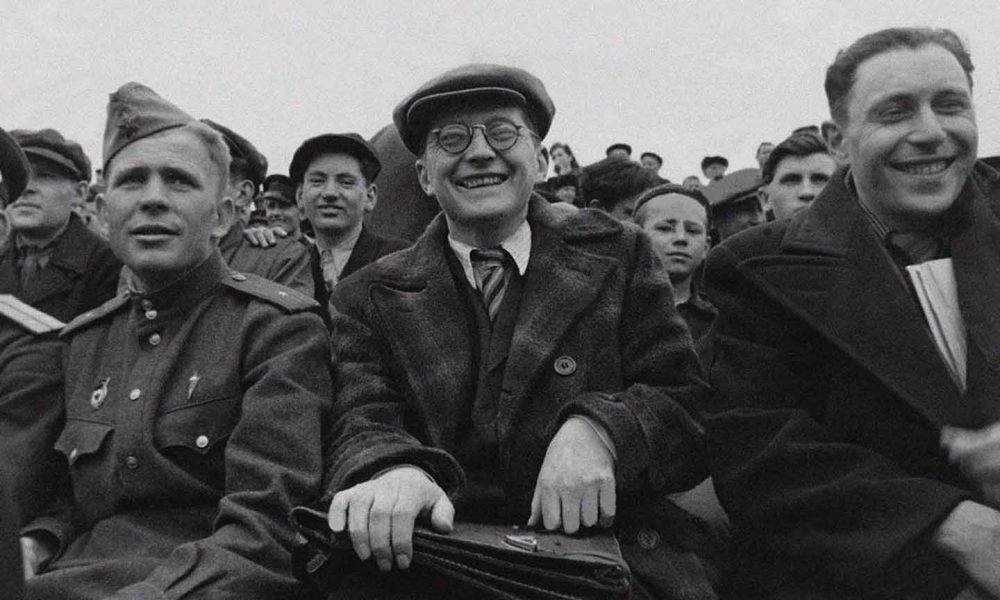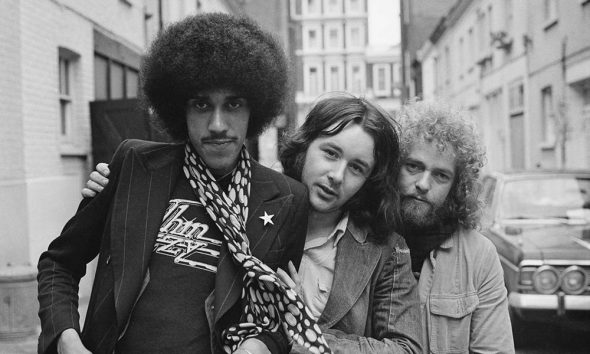Best Shostakovich Works: Essential Pieces By The Great Composer
Intense feelings are at the core of the best works from one of the most impactful composers of the 20th century.

Soviet-era Russian composer Dmitri Dmitriyevich Shostakovich lived his life in a constant state of surveillance. His relationship with his government was an unending source of uncertainty. Even so, he became one of the most impactful composers of the 20th century with a vast musical output that includes fifteen symphonies, six concerti, fifteen string quartets, three operas, three ballets, solo piano works, chamber music, and music for theatre and film.
While this music is for people of all ages, and it carries an enormous depth of musical and political complexity, it’s interesting that Shostakovich frequently resonates with teenagers. Many classical musicians recall being obsessed with Shostakovich in high school. Perhaps this is because – at its most fundamental – intense feelings are the core of Shostakovich’s music. Melancholy, ferocity, tenderness, romanticism, and darkly sarcastic quips can all be found within his scores.
Listen to the best Shostakovich works now.
String Quartet No. 8 in C minor, Op. 110 (1960)
This cornerstone work opens with “DSCH” – Shostakovich’s musical signature which can be found throughout his repertoire. The work itself is dedicated to “to the victims of fascism and the war,” although what exactly this means and whether or not this inscription was imposed by Russian authorities is hotly debated. Many classical music fans become acquainted with Shostakovich through his String Quartet No. 8, and for good reason. It is as profound and heart-wrenching as it is rhythmic and visceral.
Lady Macbeth of the Mtsensk District (premiered in 1934)
Based on the novella Lady Macbeth of the Mtsensk District by Nikolai Leskov, Shostakovich’s 160-minute opera tells the story of a Russian woman driven to murder. Following initial praise and frequent performances for two years, Stalin attended the opera in 1936. Two days after Stalin attended, the opera was publicly condemned in the magazine Pravda in a piece titled “Muddle Instead of Music” and then swiftly banned in the Soviet Union until 1961.
Symphony No. 5 in D minor (1937)
Arguably the most famous of Shostakovich’s works, his Symphony No. 5 came at a pivotal moment after Shostakovich had displeased Stalin with his opera Lady Macbeth of the Mtsensk District. The first two movements summon feelings of Beethoven and Mahler in their lush orchestrations, and Shostakovich shows his craft to great avail by spinning long musical lines that resemble unending questions. It is said that Shostakovich privately described the symphony’s final movement as a satirical and false exaltation to the dictator. Musically, it is wildly unpredictable. Fanfare-like motives dissolve into fragile textures, while major switches to minor at a moment’s notice.
Cello Concerto No, 1 in E Flat Major (1959)
Composed for Shostakovich’s friend, the legendary cellist Mstislav Rostropovich, Shostakovich’s first concerto is a staple concerto that challenges even the best cellists. Those who listened to the opening movement of the String Quartet No. 8 will recognize the very same “DSCH” theme in the cello concerto’s first movement, which is reshaped and morphed throughout (except for in the second movement). The emphasis on offbeats and syncopated rhythms comes to the forefront in the final movement. It’s hard not to get carried away by the driving momentum of this fiery work.
Symphony No. 10 in E Minor, Op. 93 (premiered in 1953)
Shostakovich’s 10th Symphony is frequently thought of as his commentary on the Stalin era. The connection between external politics and Shostakovich’s inner life continues to be a point of discussion between musicologists and music lovers. Leaving those questions aside, the second movement is an exemplary example of Shostakovich’s writing for brass and how he pits sections against each other in the orchestra.
The Gadfly Suite (1955)
Like many of today’s composers, Shostakovich also wrote for the big screen. The Gadfly Suite showcases a completely different side to Shostakovich and takes notable influence from Massenet in its sweet and romantic melodies.
The Piano Quintet in G Minor, Op. 57 (1940)
Written for the Beethoven Quartet and premiered with Shostakovich himself on piano, this work has become a classic chamber music piece from the 20th century. The piano quartet is an unequal instrumentation to begin with. By the nature of their capacity for sound, the strings (two violins, viola, and cello) inherently must fight to be heard over the piano. This sense of inherent struggle is met with an earnestness and attention to cascading and elongated musical lines.
String Quartet No. 12 (1968)
The String Quartet No. 12 stands out for two reasons. First, its opening is quite unexpected for Shostakovich, as it spells out a 12-tone row and then it suddenly breaks open to tonality. Second, instead of a traditional four-movement structure, it consists only of a short first movement and long second movement.
Sonata for Viola and Piano, Op. 147 (1975)
Completed on his deathbed, the Viola Sonata is a look back at life. The first movement, which is described by the composer as a “novella,” opens with a hauntingly stark pizzicato line which is then met by the falling piano. The entire work is full of musical easter eggs, including quotes from Shostakovich’s own previous works and allusions to composers, including Beethoven and Alban Berg, who informed his creative outlook.
Listen to the best Shostakovich works now.











Tom Vendetti
December 13, 2022 at 12:21 pm
Concerto for Violin No. 1 is essential.